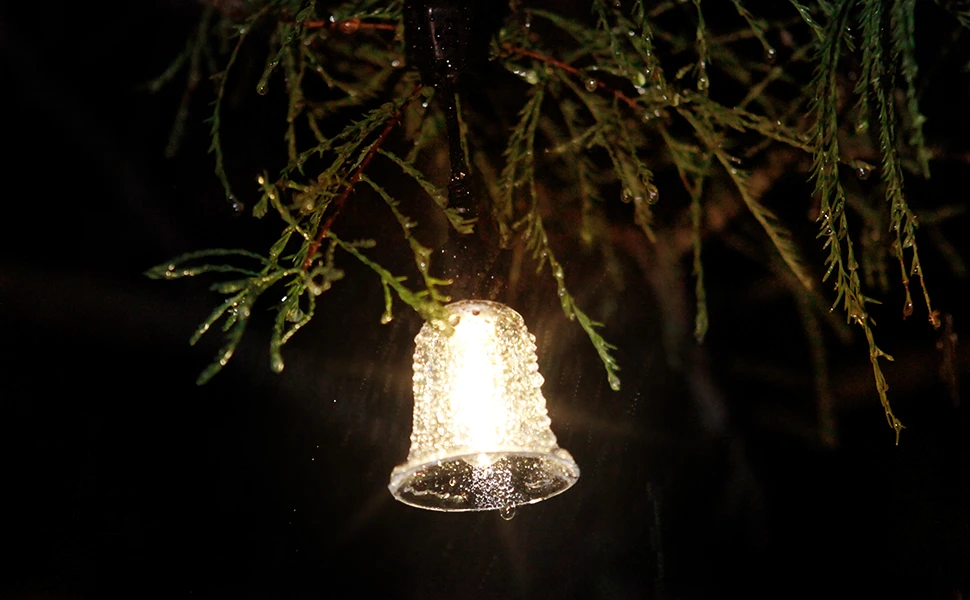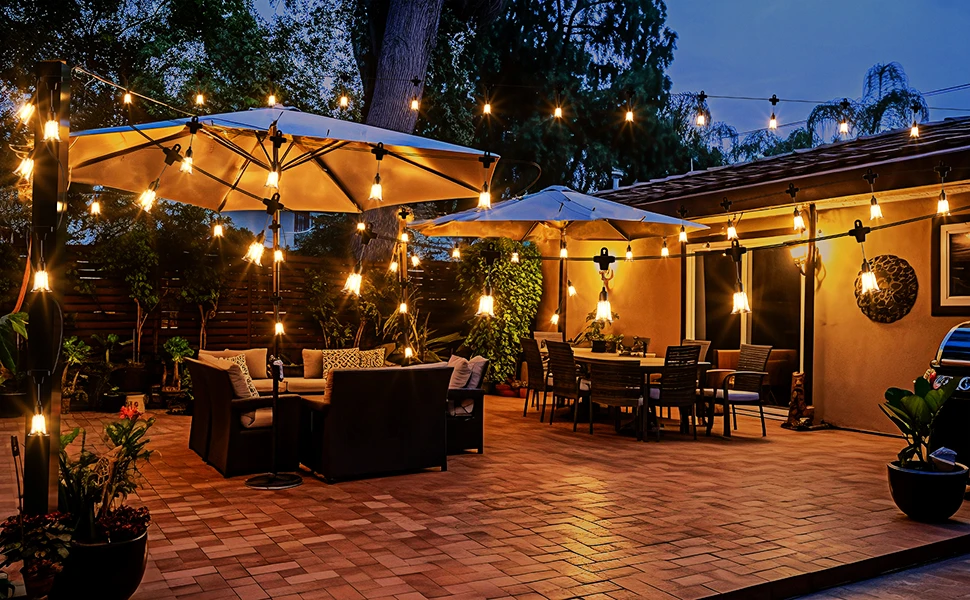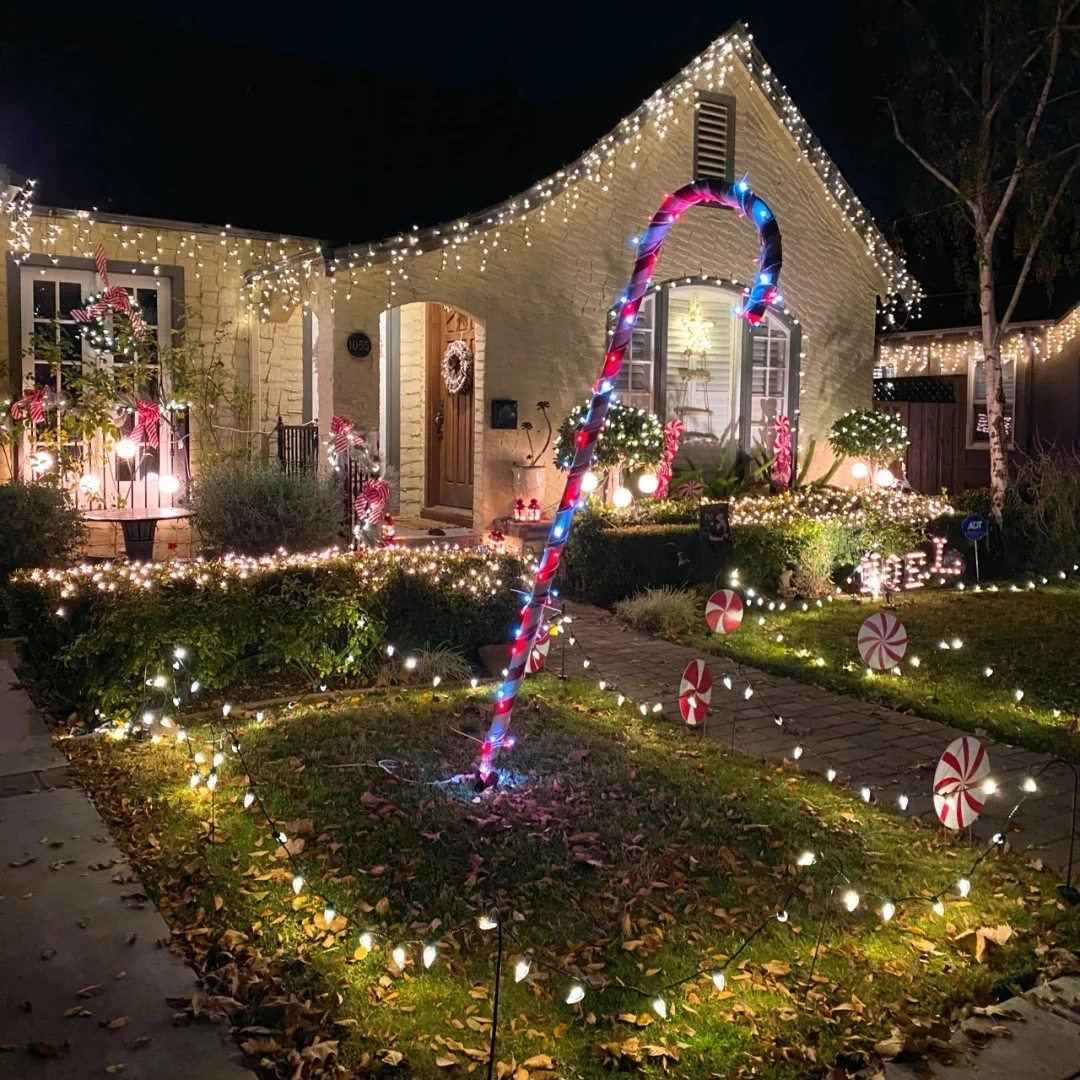Outdoor solar Christmas fairy lights are a sustainable, enchanting way to illuminate your holiday season. These eco-friendly lights harness sunlight to create a magical ambiance, perfect for gardens, patios, fences, or window sills. This comprehensive guide addresses user needs, diving into technical details, niche applications, purchase considerations, maintenance tips, and cognitive shifts to maximize their charm. Drawing from expert insights and real-world testing, this article ensures you choose the best lights for your festive setup.

Technical Details of Outdoor Solar Christmas Fairy Lights
Micro Solar Panel Power Adaptation
Outdoor solar Christmas fairy lights rely on micro solar panels to convert sunlight into energy, stored in rechargeable batteries. These panels, often the size of an A5 sheet or smaller, are designed for efficiency despite limited winter daylight. High-quality models, like those tested by BBC Gardeners’ World, feature panels with a peak output of over one watt, ensuring sufficient brightness even in cloudy conditions.
To optimize power, panels should face direct sunlight at a 90-degree angle, typically tilted to match your latitude (e.g., 51° for London). Unlike traditional lights, solar fairy lights include a control box with batteries, often NiMH or lithium-ion, offering 8–12 hours of runtime after a 6–8 hour charge. For regions with minimal sunlight, some models, such as PowerBee’s Endurance lights, include USB-C charging as a backup, providing up to 12 nights of illumination from a single indoor charge.
Light Control and Battery Life Logic
Winter’s short daylight hours challenge solar lights, but advanced models use dusk-to-dawn sensors or timers to conserve energy. Dusk-to-dawn sensors automatically activate lights at sunset, while timer-controlled options let you set specific hours, ideal for managing battery life. For instance, the Brightown 33-foot fairy lights offer eight modes, including steady glow and twinkle, with a battery life of 10 hours on a full charge.
Battery life varies by season. In summer, lights may last 8–12 hours, but in winter, expect 3–10 hours unless supplemented by USB charging. PowerBee’s large-panel models excel here, shining until 6 a.m. even in December. To extend battery life, choose lights with replaceable batteries (e.g., AA NiMH) and store them indoors post-season to prevent degradation.
Niche Scenarios for Outdoor Solar Christmas Fairy Lights
Wire Toughness for Fence Wrapping
Wrapping outdoor solar Christmas fairy lights around fences demands durable, flexible wires. High-quality lights, like those from Festive Lights, use weather-resistant PVC or rubber-coated cables with IP44 or IP65 ratings, ensuring protection against rain, snow, and frost. These wires withstand sharp tugs and extreme weather, as proven in Which? tests where lights survived four winters.
For fence wrapping, choose lights with 100–300 LEDs over 10–30 meters, like PowerBee’s 200-light set, which offers 2 meters of lead cable for flexible panel placement. Secure wires with UV-resistant cable ties every 50 cm to prevent sagging. Avoid overly thin wires, as they may snap under tension or cold temperatures below -10°C.
Angle Installation Tips for Window Sill Decorations
Window sills are ideal for showcasing fairy lights, but installation angles matter. To create a cascading effect, drape lights at a 45° angle from the sill’s edge, securing them with adhesive clips or suction cups. For a framed look, align lights along the sill and vertical window edges, using 50–100 LEDs per meter for dense sparkle. Models with remote controls, like BBC Gardeners’ World’s beaded fairy lights, simplify mode changes without disturbing the setup.
Ensure the solar panel is angled toward sunlight, even if not south-facing, as modern panels capture diffuse light effectively. Place the panel on an adjacent ledge or mount it with a stake 21 cm away, as recommended by Arka Energy. For indoor sills, run the wire through a window gap, sealing it with weatherproof tape to maintain insulation.
Purchase Blind Spots for Outdoor Solar Christmas Fairy Lights
Frost Test Standards for Low-Temperature Weather-Resistant Wire
Cold weather can brittle cheap wires, so prioritize lights with frost-resistant cables. Look for IP65-rated models, which withstand temperatures from 0°F to 120°F, as noted in Arka Energy’s guide. Which? tested lights enduring -20°C freezes, with PowerBee’s Endurance lights passing unscathed. Check for “shatterproof” or “low-temperature resistant” labels, as these ensure durability in harsh winters.
Avoid lights lacking clear IP ratings or temperature specs, as they may fail during frost. For extra protection, opt for lights with UV-resistant coatings to prevent cracking after prolonged sun exposure. Test reports from The Spruce confirm that Brightown’s solar fairy lights survived hail and subfreezing conditions, making them a reliable choice.
Matching Light String Spacing with Decoration Density
Light spacing affects aesthetic impact. Fairy lights typically have LEDs spaced 5–10 cm apart, ideal for dense, twinkling effects on trees or pergolas. For sparser decorations, like fence outlines, choose 15–20 cm spacing to avoid overcrowding. PowerBee’s 200-light set offers 10 cm spacing over 20 meters, perfect for balanced coverage.
Measure your decoration area to match light length and density. For example, a 3-meter tree needs 10–15 meters of lights for full wrapping. Check lead cable length (e.g., 2 meters from panel to first LED) to ensure panel placement flexibility. BBC Gardeners’ World’s 100-LED set with a 2-meter lead suits shady spots where panels need distant sun exposure.

Maintenance Tips for Outdoor Solar Christmas Fairy Lights
Cleaning Solar Panels During Winter Snowfall
Snow-covered solar panels reduce charging efficiency, so regular cleaning is crucial. Use a soft brush or cloth with warm, soapy water to gently remove snow, dust, or dirt, as advised by Arka Energy. Avoid steel wool or harsh chemicals, which can scratch or corrode panels. Rinse with clean water and dry to prevent ice buildup.
Clean panels biweekly during heavy snowfall, ensuring they face sunlight unobstructed. For hard-to-reach panels, use an extendable pole. Store lights indoors post-season to protect panels from prolonged snow exposure, extending their 20-year lifespan.
Easy Replacement of Mini Lamp Beads
LEDs in fairy lights last 10,000+ hours, but occasional failures may occur. Choose models with replaceable beads, though most consumer-grade lights have fixed LEDs. For commercial systems like Solar Illuminations’ XP08, individual beads can be swapped using a small screwdriver to access the socket. Always match voltage and color temperature (e.g., 2700K warm white) when replacing.
Inspect lights annually for dim or dead beads. If non-replaceable, trim the affected section and splice wires with waterproof connectors, ensuring polarity aligns. Test lights before reinstalling to confirm functionality. Store spares in a cool, dry place to avoid moisture damage.
Cognitive Breakthroughs for Outdoor Solar Christmas Fairy Lights
Prioritizing Atmosphere Over Brightness
Holiday lighting thrives on ambiance, not blinding brightness. Outdoor solar Christmas fairy lights excel with warm white LEDs (2700K–3000K), mimicking candlelight for a cozy glow. BBC Gardeners’ World’s beaded lights emphasize this, offering a soft, inviting shine over harsh 6000K cool white.
Focus on light placement rather than lumen output. Wrapping lights tightly around branches or scattering them across shrubs creates depth and sparkle. Eight-mode options (e.g., twinkle, slow fade) enhance mood, as seen in Brightown’s versatile settings. Dimmer lights (1–5 lumens per bulb) suffice for festive charm, saving battery life for longer runtime.
Installation Direction ≠ Fixed South Facing
Traditional advice suggests south-facing solar panels, but modern fairy lights capture diffuse sunlight effectively. Adjust panel angles based on your location’s winter sun path—tilt 15°–30° above latitude for optimal exposure, as per Sunny Bunny’s guide. In the Northern Hemisphere, face panels slightly southwest to catch late-day sun.
Experiment with panel placement, using stakes or wall mounts for flexibility. If shadows from trees or buildings block direct sun, position panels in open areas, even if north-facing, as long as they receive 4–6 hours of light. USB charging mitigates poor solar conditions, ensuring consistent performance.
Conclusion
Outdoor solar Christmas fairy lights blend sustainability with festive magic, offering versatile, low-maintenance illumination. By understanding their technical capabilities, niche applications, and maintenance needs, you can create a stunning holiday display. Prioritize durable, frost-resistant models with flexible charging options and warm, ambient glows. With strategic installation and care, these lights will shine brightly for seasons to come, transforming your outdoor space into a winter wonderland.


Leave a Reply